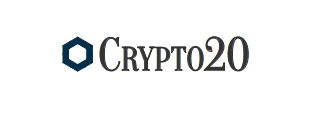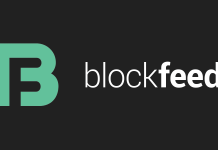Interview with Daniel Schwartzkopff, responsible for Business Development, Marketing, Operations @ Crypto20.
What is Crypto20?
CRYPTO20 is an autonomous, tokenized crypto-only index fund. It tracks the top 20 cryptocurrencies in the same way the S&P500 tracks the top 500 US stocks. It is a complete product and the ICO proceeds go towards buying the underlying assets and not to pay for the development of a platform. Each token represents an investor’s share of the underlying assets. The tokens are directly connected to the value of the underlying assets via the smart contract.
Owning a diverse, rebalanced cryptocurrency portfolio is now as easy as holding a single token.
Can you highlight team members/advisors who have direct experience in funds/investing?
–Bobby Jonker (PwC UK, Investment Management, Chartered Accountant)
–Jon Matonis (Chairman of Globitex, institutional-grade bitcoin and derivatives exchange. Founding & Executive Director of the Bitcoin Foundation, Chief Forex Dealer & Director of Credit Card Interchange at VISA International, Director of Financial Services at Verisign)
–Dan Doney (CEO, Securrency. Previously Chief Innovation Officer of the Defense Intelligence Agency (USA))
Many other team members have had experience in dealing with funds and investments via consulting (Frans Cronje, Daniel Schwartzkopff) – DataProphet, a partner machine learning company they founded that services major international financial services businesses, or their education (economics, statistics, actuarial science, etc.)
Bitcoin Maximalists state that all altcoins are an experiment whose functionality will eventually be incorporated in BTC, what is your take on this?

I do not think this is a realistic position to take in the current cryptocurrency climate – even ardent Bitcoin supporters/developers/miners are unable to agree on a single path for the cryptocurrency; this culminated in the fork that created BCC (Bitcoin Cash) and it will likely be the first of several over the coming years.
We have already seen bitcoin lose its position vs. altcoins as the largest contributor to the total cryptocurrency market cap – currently bitcoin dominance sits at around 47.4% (Coinmarketcap, 24th September 2017). Some ‘mineable’ coins may see their functionality integrated into bitcoin but the utility token space is so vast and diverse that all their combined functionality will never be able to be incorporated into bitcoin; e.g. OmiseGO mobile wallet functionality.
What are the requirements for a coin to be in the CRYPT20 index?
The coin should be in the top 20 cryptocurrencies by market capitalization and not be created with the intention of supporting or facilitating any illegal activities.
To determine fund hyperparameters (number of coins in the index, rebalancing methodology and maximum component cap) we ran backtests over 100 6-month rolling windows to produce results that are relatively time-invariant. We also investigated only discrete values (e.g. 10,15,20,25,30 coins) so as to prevent overfitting; e.g. in a backtest it may have been revealed that 17 coins was a true optimum for that particular dataset but care was taken to allow for good generalization to future data. The full result of our hyperparameter optimization backtests are available in section VII of our white paper.
How often is the index rebalanced?
Weekly – this allows for enough time to purchase or dispose of assets as the fund rules dictate without paying a large premium over the best market rate; it also offers a lower fund turnover rate which in turn means lower exchange fees, and, finally – it allows for the mitigation of ‘front-running’ by varying purchase times within the rebalancing window. Daily and monthly rebalancing periods were also investigated; daily rebalancing massively increase fund turnover (and exchange fees) and monthly rebalancing does not effectively track the index.
What will be the weight of each coin in the index?
Each coin has a maximum component cap weighting of 10%; various component weightings were investigated. A 10% cap is more profitable more often and it offers a decreased risk profile when compared to a fund without a cap where a single coin may entirely dominate the weighting.
Why have is the fund focused on the top 20, rather than the top 15 or top 30?
The number of coins in the tracked index is correlated to the fund return and expense ratio. The number of outperforming windows was substantially higher for 20 coins when compared to the alternatives. The top 20 provides exposure to the majority of the cryptocurrency market cap while avoiding the risk of ‘pump and dump’ schemes that may appear in a much larger index, such as the top 50.
What are the ICO dates?
A 5% discount is available for the first 7 500 000 tokens sold; i.e. $0.95 per token.
After this the token pricing will be set to $1 per token. The maximum fund size is $75mn. This was determined by calculating if there was sufficient trade volume to acquire a new asset within an acceptable slippage from best market rate; the full analysis is in the Trading Strategy section of our white paper.
At launch what will 1 C20 token represent?
1 C20 token will represent 1 share of the total fund assets (out of 86 206 896 total tokens).
The tokens can be sold on a secondary market (exchange) or liquidated via the smart contract for the market rate of the underlying assets in ETH. 98% of the ICO funding will go directly towards purchasing the underlying assets.
Can the price of the index go higher are lower than the value of the assets backing it? What happens in this case?
Yes, it is common for CEFs (closed-end funds) on stock exchanges to trade at premiums over and above the underlying assets, especially in niches like tech or healthcare.
A lower price bound is set by the smart contract – it would be irrational for investors to sell the tokens at a lower price than their share of the fund NAV (net asset value) as they would be able to obtain this price by liquidating directly via the smart contract.
What are the investor fees?
Management fees are only 0.5% per annum of average fund net asset value. We are able to offer such low annual fees because of the autonomous nature of the fund. The closest competitors in the crypto space have fees of upwards of 3% per annum.
What are the tax benefits of investing in this fund?
The tax advantages vary per jurisdiction and as regulations are changing fairly rapidly consultation with a local tax attorney will likely be beneficial.
How will the assets be secured?
Cryptocurrencies will be stored in cold wallets, and only moved to exchange when necessary for rebalancing. Ledger Nano S hardware wallets will be used for the storage of all cryptocurrencies it supports. For all cryptocurrencies not supported, encrypted USB drives will be utilized.
These storage devices will be held in secure safe deposit boxes with back-up paper-wallets stored at separate secure locations. Locations are undisclosed for security consideration. A public audit post-ICO will confirm the presence and safe storage of the USB drives and paper-wallets to ICO participants.
Will the public addresses of these assets be published?
Yes, all fund information and holdings will be accessible live from our investor portal. CRYPTO20 will also produce quarterly reports and financial statements will be issued annually.
When will Crypto20 be live?
CRYPTO20 is currently a finished product and asset acquisition will occur as soon as our audit partners have completed the post-ICO audit. The report will be made public and trading will commence before 15 January 2018.
When will Crypto20 tokens be tradable?
C20 tokens will be listed for trade on the exchanges in January 2018.
For more information please visit: https://crypto20.com/en/
We thank Daniel Schwartzkopff for the interview.












